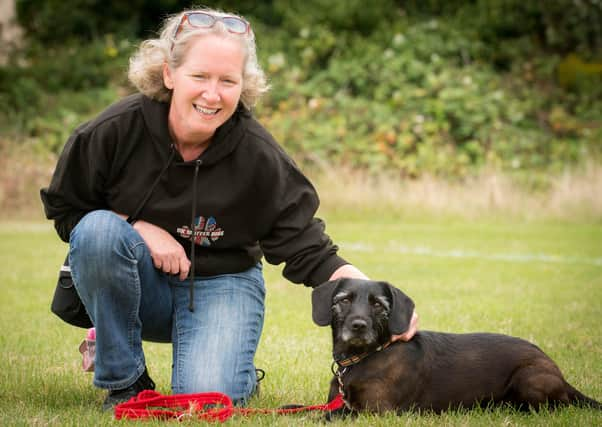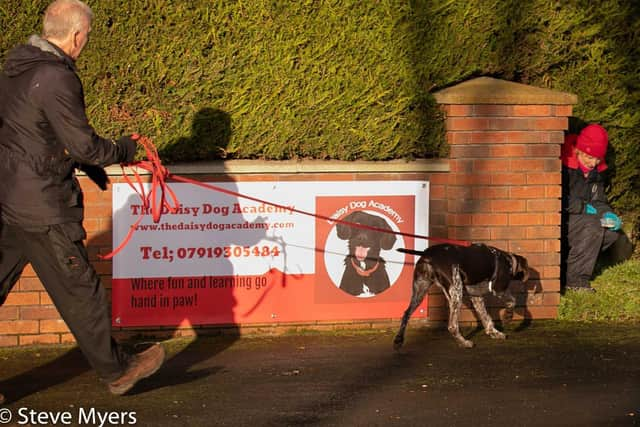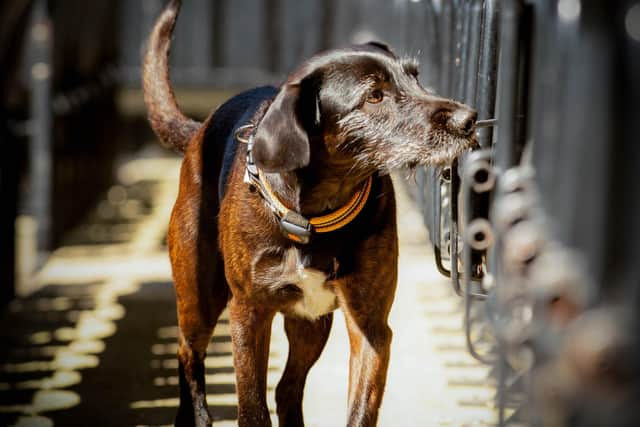Let your dog sniff out some training at Daisy Dog Academy


The best way to describe scent for a dog is to compare it to our eyesight, we see the world, they smell the world. On average a person can see approximately 1/3 of a mile, if you used that analogy to transfer a dog’s sense of smell to vision it would be the equivalent of us seeing for approximately 3000 miles and still be able to see it really clearly, To give you an idea of how far that is it is approximately from London to New York.
Our dogs’ noses can have up to 300 million scent receptors, we have up to 6 million, which might explain why we don’t really get the sniffing thing! It doesn’t matter what breed of dog you have; I know some people think that only Labradors or spaniels can do it but they all can! I have trained a wide variety of dogs from Min Pins, Doberman, Chihuahua’s, terriers and everything in between. They can all do scent work and benefit hugely from it.
Advertisement
Hide AdAdvertisement
Hide AdFor dogs, using their nose is both relaxing and tiring as they are using their brain to process the scents in their Olfactory system. The part of the brain that processes and deals with our sense of smell is called the Olfactory bulb, both dogs and humans have them, but our dogs’ olfactory bulb is 40 times larger than ours.


Our dogs’ noses couldn’t be more different to our rather ineffective hooters. Firstly, the surface of the nose, (known as the rhinarium) is a fingerprint for each dog. Each dogs nose has a unique pattern of grooves or dermal ridges just like our own fingerprints, so that nose artwork in the car is unique to your special four-legged friend.
What makes their nose so special? The design of a dog’s nose is engineered to perfection. They have two forward facing nostrils and slits on either side of their nose. This design allows our dogs to both inhale and exhale at the same time. The beauty of this design is that it also aids scent detection. When dogs exhale through the side slits of their nose, this allows them to continue to inhale through their nostrils. The air is expelled downwards and outwards from the slits, having no impact on the scent particles being taken in by the front of the nose, in fact this design helps them push scent particles towards their nose.
Another cool difference is our dogs’ nostrils work independently. Unlike us they have two separate nasal passages that can both be taking in and processing odours at the same time.
Advertisement
Hide AdAdvertisement
Hide AdScent work can be an amazing natural tool to help with behavioural problems, build confidence and deal with those dogs that don’t have an off switch; scent work is fantastic for any issues you have with a dog.


We under utilise our pet dogs’ noses, but they are used extensively for their incredible scent skills in so many fields. The Military, Police dogs, Search and Rescue, Medical Detection, they can diagnose cancer and have now been trained to identify Covid 19. They are being used in Helsinki airport as we speak to detect Covid, which is just incredible.
Using a dog’s nose, is using a dog’s brain as I said. The benefits to the dog are vast for a variety of reasons, it gives them a focus and a purpose, helping to build up that all important relationship between handler and dog. For those dogs who don’t know when to stop it can help them slow down. Using their brain uses up a lot of energy leaving them feeling relaxed and calm. Nervous dogs build in confidence as they have a purpose and with every successful search it gives them more confidence to try new experiences working with their handler. Reactive dogs benefit from the focus and engaging their senses, this does wonders to help increase their threshold and reduce the amount of reactivity you experience out in the world. I have known reactive dogs after a six-week course to be actually social with the group of dogs they have come to know and trust.
Scent work comes in different forms, from informal food hunt around the house which can be great fun on those rainy days. A more formal practice teaching a scent ID for specific items, chemicals that the dog is trained to find tiny particles of, much like our Police Search Dogs but we are doing it for fun, you and your dog working as a team. I am the first UK Sniffer Dog Instructor in Ireland qualified in Bronze, Silver and Gold, teaching your dog up to four scent IDs and even teaching them to search underwater.
Advertisement
Hide AdAdvertisement
Hide AdThe newest form of scent work and the fastest growing dog sport is Mantrailing. At Mantrailing UK we train the dog to find a specific person. You work as a unit and learn to read your dog and what they are communicating via their body language. As we only work one dog at a time it is ideal for those dogs that have had issues in the past attending classes or who are reactive to people, as this will all help combat those issues,
How does it work? It is exactly the same process used by those operational dogs working with the Police and Military to find fugitives and Search and Rescue to find vulnerable people who have gone missing. The passive scent work is the same process used to teach dogs to find drugs or money, Both forms of scent work involve you working as a team and learning to read your dog and what they are communicating when they get near to the target odour.
You might look at your dog slightly differently now when they are out on a walk sniffing. Did you know from one drop of urine the dog can tell a huge amount about the dog that left it? They will know if they have met that dog before, male, female, spayed, neutered, if they are healthy, what kind of diet they eat and a lot more besides. It is a bit like you checking your social media feed or your emails, in the dog world we like to call it their pmail and it is just as important for them to keep up their social relationships as us.
How do you get to learn more about Scent Work and or Mantrailing? At The Daisy Dog Academy we offer both, and I am the first and only Mantrailing UK instructor in Ireland, the only accredited Mantrailing International Training Centre for the UK. We offer scent work classes and Mantrailing workshops that are open to all. My scent classes are a six-week course training for the UK Sniffer Bronze level.
Advertisement
Hide AdAdvertisement
Hide AdScent work is my passion and seeing owners unlocking the wonderful talent their dog had all the time is such a joy to witness. If you would like to learn more or would like to come along with your dog and learn about scent work, then take a look at wwwthedaisydogacademy.com.